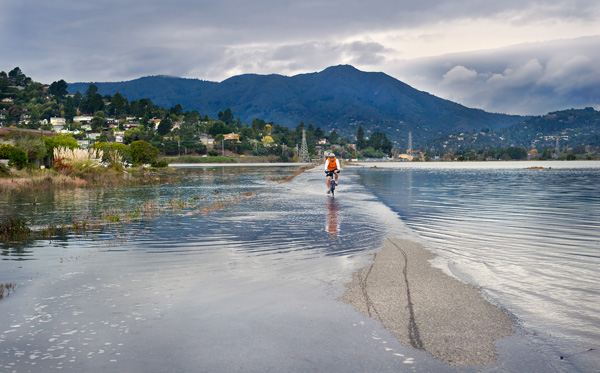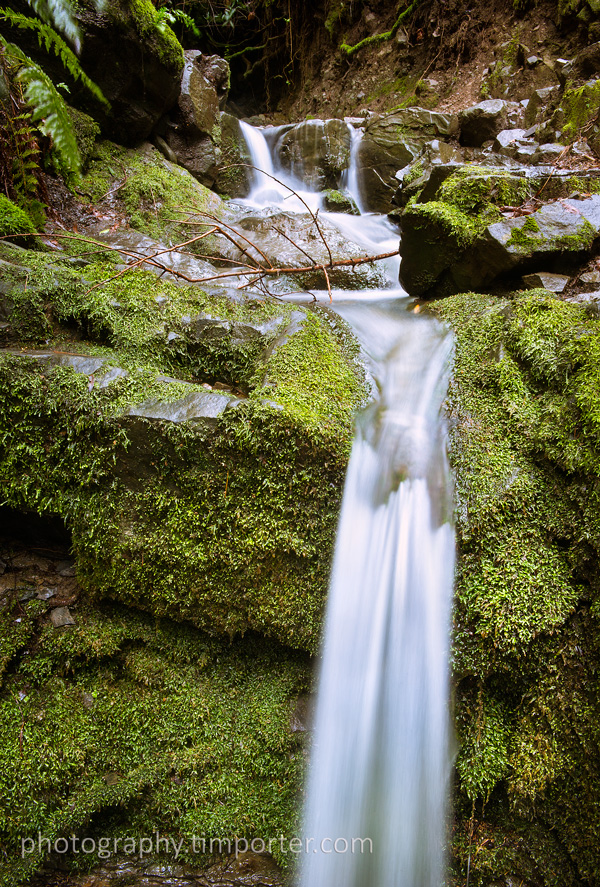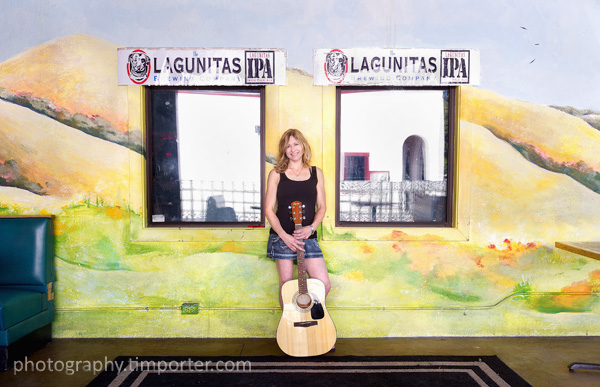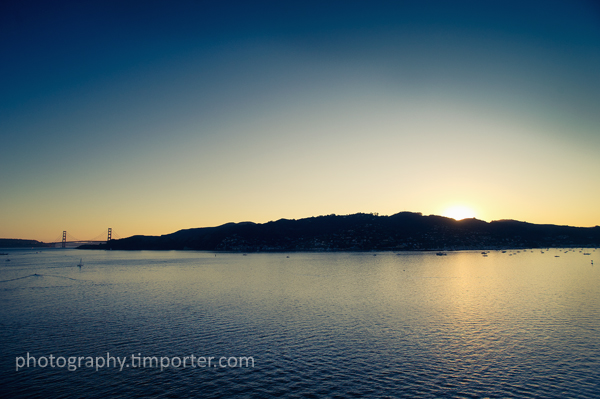
- High tide already floods the bike path through Bothin Marsh in Mill Valley.
I wrote and photographed a piece for the current issue of Marin Magazine about the projected effects of climate change, most specifically sea-level rise, on Marin County.
Marin, like much of the San Francisco Bay Area and other parts of California, faces a wetter future. If current temperature and sea level trends continue through the century, routine tides could be as much as 55 inches higher than they are today and even higher during storm surges.
Imagine the affect of four-and-a-half feet more water on coastal communities such as Mill Valley, where today’s highest tides already flood city streets, marshes and recreation areas. The bike rider above is crossing Bothin Marsh between Mill Valley and Sausalito, which is already inundated several times a month by winter tides.
If what scientists predict comes to pass — and some form of it will despite all of today’s “green” mitigation efforts — rising seas are going to change the way we live and extract severe financial and social costs.
Here is the opening section. The rest is below the jump (or here online).
Rising Seas: Marin prepares for a wetter, warmer future
On the winter days when the monthly tides are highest, you can stand on the narrow, asphalt ribbon of the bike path that traverses Bothin Marsh in Mill Valley and watch the water of Richardson Bay climb over the man-made banks and rise slowly, inexorably, until its cold wetness reaches your shins. You are no longer on dry land. You are in the middle of the bay.
Flash forward to the year 2100. The earth has had 88 more years to warm up, and the seas have been rising a little more every year. Your grandkids stand in that same place on the marsh and wait for high tide. When it comes, the water flows over their heads.
That’s climate change. That’s the threat Marin County faces — higher seas, bigger tides and stronger waves that could drown the marshlands of Mill Valley and Novato, flood neighborhoods built on reclaimed land in Tam Valley, Santa Venetia and Hamilton, and erode the coastal bluffs of Bolinas.
The mess that rising seas could make of Marin is but a small part of the larger challenge climate change presents to the planet. But this story is not about the global effort to regulate carbon emissions, not about the national yammering of politicians, preachers and scientific professionals about why the earth is warming (is it man, is it nature, is it a vengeful God delivering payback for our profligate ways?), and not about whether the earth is in fact getting warmer. The mercury is rising and the oceans along with it.
This story is about Marin County and how a lot of people here are trying to make sure that come the day when the waters of San Francisco Bay — which have already risen 8 inches in the last century — are lapping at the doorsteps of homes and businesses now hundreds of feet from shore, that the inhabitants of that warmer, wetter future do not ask of our generation: Why didn’t they do something?

Continue reading →












 Put 10 or 12 people in a dark coffee shop, add in a freelance writer, a magazine editor, a roomful of customers and a couple of homeless people in the back, and you’ve got a scene.
Put 10 or 12 people in a dark coffee shop, add in a freelance writer, a magazine editor, a roomful of customers and a couple of homeless people in the back, and you’ve got a scene.

 I just finished
I just finished 



 Four decades later when I met Harris in his Mill Valley home I was a bit intimidated and hoped I could make a picture worthy of my opinion of him, which when I left 45 minutes later I wasn’t sure I had (but I was even more self-critical in those days than I am now — something those who know me well might find hard to believe).
Four decades later when I met Harris in his Mill Valley home I was a bit intimidated and hoped I could make a picture worthy of my opinion of him, which when I left 45 minutes later I wasn’t sure I had (but I was even more self-critical in those days than I am now — something those who know me well might find hard to believe).


